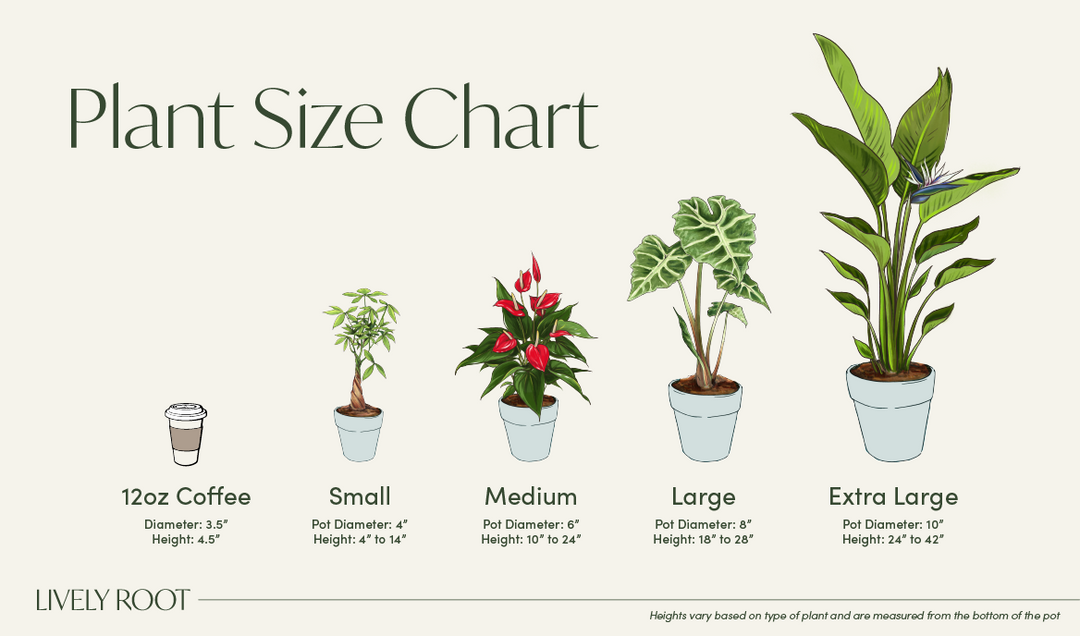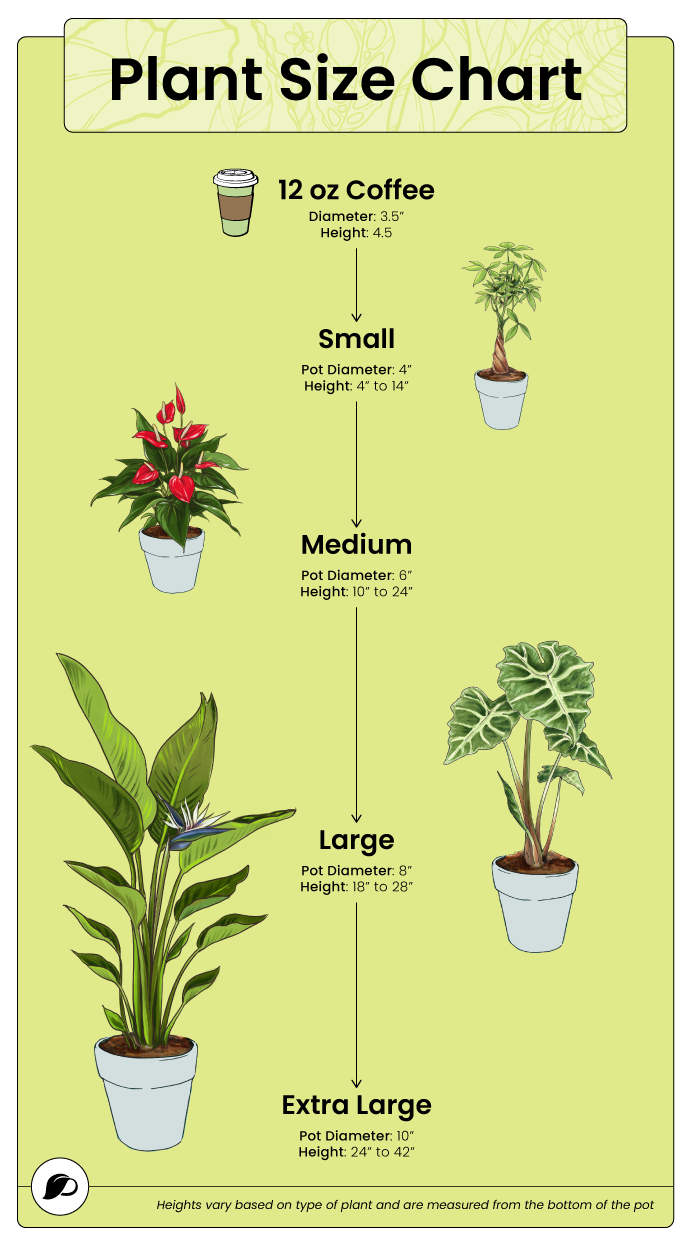Gift Card Balance
Enter the code below to redeem your gift card

The Sago Palm (Cycas revoluta) is a palm-like tropical plant with a thick, squat trunk and a symmetrical crown of arched, feathery fronds. In the wild, it reaches up to 12 ft. in height if planted in the ground. However, as an indoor plant, a full-grown Sago Palm normally reaches a maximum size of 4-6 ft. Sago Palm trees also make excellent patio plants in USDA hardiness zones 9-10.
The Sago Palm is not a true palm; it belongs to the Cycadaceae family, an ancient family of plants believed to have preceded the dinosaurs. The Palm Sago is native to southern Japan and the islands of Indonesia. Sago palms are very slow-growing but long-lived plants, sometimes with a lifespan of over 100 years. The Sago Palm plant produces sago starch, which is used as food and prized for its medicinal properties in parts of Southeast Asia.
The Sago Palm Cycas requires plenty of bright, direct sunlight. It is easy to care for, making it perfect for beginners and experienced plant enthusiasts. Unfortunately, all parts of the Sago Palm are poisonous for pets (especially dogs) if ingested.
The Sago is considered a lucky plant in Feng Shui, believed to attract positive energy and harmonize the space. It symbolizes endurance, new beginnings, and longevity.
Other attractive palms for transforming your living space include the feathery Pygmy Date Palm Tree and the delightful Coconut Palm Tree.
Sago Palm care is easy. This lovely tropical plant will thrive if its basic needs are met. just follow our Sago Palm tree care tips. Here’s how to care for a Sago Palm:
Let your palm’s soil dry thoroughly before repeated watering. While the Sago Palm tree enjoys moist soil, too much water can lead to root rot. Remember to reduce watering in the winter months. One of the Sago Palm benefits is that it releases moisture into the air, enhancing dry indoor environments. Your King Sago Palm will appreciate some extra humidity. To keep it thriving, mist it once every two or three days.
This exotic palm tree flourishes in plenty of sunlight. Choose an east- or west-facing window with bright, indirect light. If you’re growing your Sago Palm outdoors, keep it out of direct afternoon sunlight, which can burn the palm’s glossy fronds. The perfect temperature range for your palm is 60℉ to 80℉. Bring it indoors if temperatures drop below 45°F.
Moist but well-draining soil is essential for the King Sago Palm tree. Add some perlite, peat moss, or pumice to enhance drainage. The Sago Palm grows slowly and will only need repotting too frequently. About once in two years is sufficient or when you see the roots growing from the pot’s drainage holes. Use a stable, 2-inch larger pot.
For the best Cycas Revoluta care, feed your Sago Palm with a slow-release fertilizer once during the growing season (spring to fall), letting it rest during winter. Propagate your Sago Palm Cycad by dividing the pups at the base of the trunk.
Remove any brown fronds or damaged stems to keep your plant healthy. Wipe the dust from your palm’s leaves to maintain its vibrant appearance.
If your Sago Palm is turning yellow, check whether the soil is too dry or too wet. Old leaves at the base of the trunk can turn yellow as they age, which is normal. Other common Sago Palm problems include scale and mealybugs; treat your palm with an organic insecticide when necessary.
After getting your Sago Palm for sale, find a place where this beautiful statement plant will work its tropical charm, enhancing relaxation and adding instant style.
Combine your Cycas Revoluta Sago Palm with other large plants to create a relaxing green corner in your home or office:
Unlike the Sago Palm, most palm trees are pet-friendly, which makes them a gorgeous addition to your pet-safe garden:
Add tropical elegance to your home with a Sago Palm tree for sale from Lively Root!
Follow us @livelyroot & show us your #livelyroot plants

